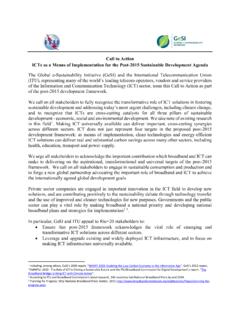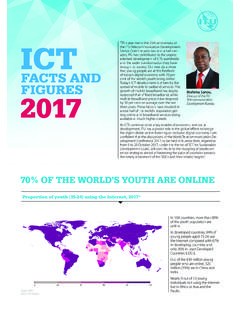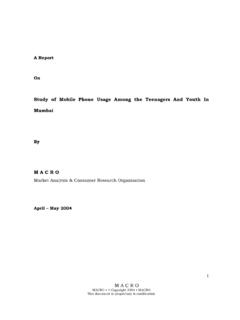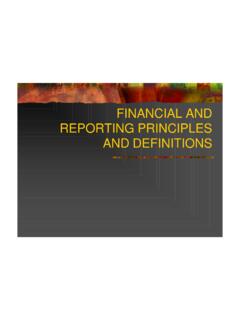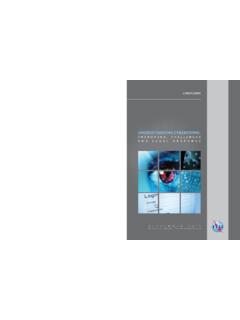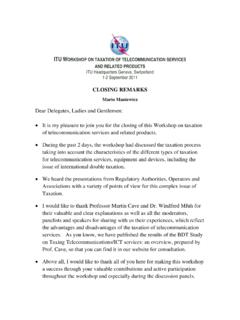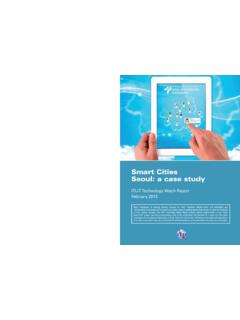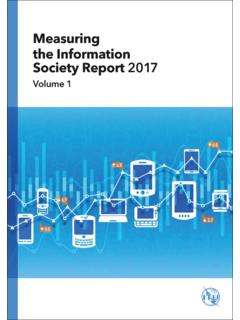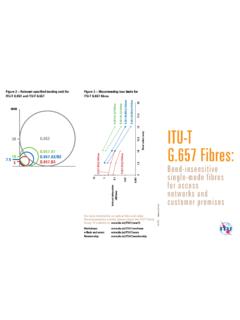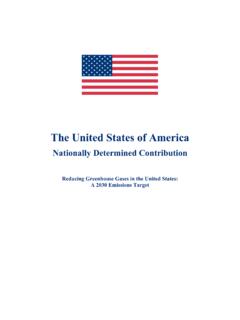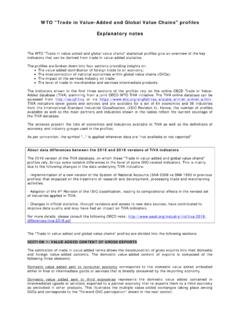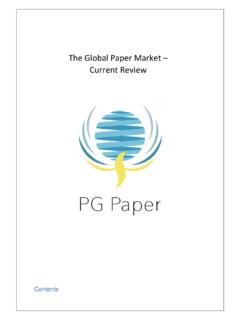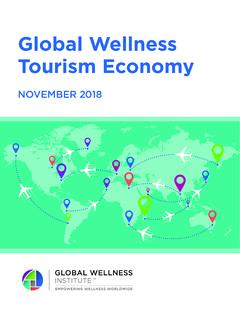Transcription of The Global E-waste Monitor 2020
1 Authors: Vanessa Forti, Cornelis Peter Bald , Ruediger Kuehr, Garam Bel Contributions by: S. Adrian, M. Brune Drisse, Y. Cheng, L. Devia, O. Deubzer, F. Goldizen, J. Gorman, S. Herat, S. Honda, G. Iattoni, W. Jingwei, L. Jinhui, Khetriwal, J. Linnell, F. Magalini, Nnororm, P. Onianwa, D. Ott, A. Ramola, U. Silva, R. Stillhart, D. Tillekeratne, V. Van Straalen, M. Wagner, T. Yamamoto, X. ZengQuantities, flows, and the circular economy potentialSupporting Contributors:The Global E-waste Monitor 202023 The Global E-waste Monitor 2020 Quantities, flows, and the circular economy potentialAuthors: Vanessa Forti, Cornelis Peter Bald , Ruediger Kuehr, Garam BelContributions by: S. Adrian, M. Brune Drisse, Y. Cheng, L. Devia, O. Deubzer, F. Goldizen, J. Gorman, S. Herat, S. Honda, G. Iattoni, W. Jingwei, L. Jinhui, Khetriwal, J. Linnell, F. Magalini, Nnororm, P. Onianwa, D. Ott, A. Ramola, U. Silva, R. Stillhart, D. Tillekeratne, V. Van Straalen, M. Wagner, T. Yamamoto, X. Zeng4 Copyright and publication information5 Contact information: For enquiries, please contact the corresponding author Bald via Please cite this publication as: Forti V.
2 , Bald , Kuehr R., Bel G. The Global E-waste Monitor 2020: Quantities, flows and the circular economy potential. United Nations University (UNU)/United Nations Institute for Training and Research (UNITAR) co-hosted SCYCLE Programme, International Telecommunication Union (ITU) & International Solid waste Association (ISWA), Bonn/Geneva/Rotterdam. ISBN Digital: 978-92-808-9114-0 ISBN Print: 978-92-808-9115-7 United Nations University (UNU) is an autonomous component of the UN General Assembly dedicated to generating and transferring knowledge and strengthening capacities relevant to Global issues of human security, development, and welfare. The University operates through a worldwide network of research and training centres and programmes, coordinated by the UNU Centre in Tokyo. United Nations Institute for Training and Research (UNITAR) is a dedicated training arm of the United Nations, with a mission of developing the individual, institutional, and organizational capacity of countries and other United Nations stakeholders through high-quality learning solutions and related knowledge products and services to enhance Global decision-making and to provide support at the country level in overcoming Global challenges.
3 SCYCLE Programme, now in transition from UNU to UNITAR, envisions enabling societies to reduce the environmental load from production, use, and the disposal of ubiquitous goods and especially electrical and electronic equipment to sustainable levels by means of independent, comprehensive, and practical research and training, providing more thorough fact bases for policy development and decision-making. Therefore, SCYCLE activities are focused on the development of sustainable production, consumption, and disposal patterns for electrical and electronic equipment, as well as other ubiquitous goods. SCYCLE leads the Global E-waste discussion and advances sustainable E-waste management strategies based on life-cycle thinking. For detailed information on SCYCLE and its projects, including its research and training activities, please visit and The International Telecommunication Union (ITU) is the specialized United Nations agency for information and communication technologies (ICTs), driving innovation in ICTs together with 193 member states and a membership of more than 900 companies, universities, and international and regional organizations.
4 Established in 1865, ITU is the intergovernmental body responsible for coordinating the shared Global use of the radio spectrum, promoting international cooperation in assigning satellite orbits, improving communication infrastructure in the developing world, and establishing the worldwide standards that foster seamless interconnection of a vast range of communications systems. From broadband networks to cutting-edge wireless technologies, aeronautical and maritime navigation, radio astronomy, oceanographic and satellite-based earth monitoring as well as converging fixed-mobile phone, internet, and broadcasting technologies, ITU is committed to connecting the world. For more information, visit ISWA:The International Solid waste Association (ISWA) is a Global , independent and non-profit making association, working in the public interest promoting sustainable, comprehensive and professional waste management and the transition to a circular :The designations employed and the presentation of the material in this publication do not imply the expression of any opinion whatsoever on the part of the United Nations University (UNU)/ United Nations Institute for Training and Research (UNITAR), the International Telecommunication Union (ITU), or the World Health Organization (WHO) concerning the legal status of any country, territory, city, or area, or of its authorities, or concerning delimitation of its frontiers or boundaries.
5 Trademark names and symbols are used in an editorial fashion with no intention on infringement of trademark or copyright laws. Moreover, the views expressed in this publication are those of the authors and do not necessarily represent those of the UNU/UNITAR, ITU, or WHO, nor does citing of trade names, companies, schemes, or commercial processes constitute endorsement. We regret any errors or omissions that may have unwittingly been made. Maps, photos, and illustrations as publication is licensed by the United Nations University/United Nations Institute for Training and Research and the International Telecommunication Union under a Creative Commons Attribution Noncommercial-Share Alike IGO License. Please take the time to learn more about Creative Commons. UNU/UNITAR and ITU, 2020. Your fair use and other rights are in no way affected by the Illustrations UNU/UNITAR SCYCLE -Nienke Hacco Credits Photos UNU/UNITAR SCYCLE -Yassyn Sidki6 Acknowledgments7 Innocent Chidi Nnororm (Abia State University) Africa Percy Onianwa (Basel Convention Coordinating Centre for the African Region) Africa Daniel Ott (RLG Americas) Latin America Uca Silva (RELAC) Latin America Ruweyda Stillhart (SOFIES) Policy & Legislation Africa and Southeast Asia Dulip Tillekeratne (CleanTech, GSMA) Policy & Legislation Africa and Southeast Asia Xianlai Zeng (Tsinghua University) East and Southeast AsiaDesign:Nienke Hacco | Op de Kaart | Photography:Yassyn Sidki | Yassyn Sidki Photography | thanks to.
6 Reed Miller (Yale University Center for Industrial Ecology), Giulia Iattoni (UNU/UNITAR), Vincent Van Straalen (Statistics Netherlands), Michelle Wagner (UNU/UNITAR), and Tales Yamamoto (Institute of Environmental Science Leiden University) for their support in data collection and analysis. The Organisation for Economic Co-operation and Development (OECD) and the United Nations Statistics Division (UNSD) for their collaboration in distributing questionnaires on E-waste to various Collins and Mijke Hertoghs (ITU) for their support in the launch of the publication and the media Global E-waste Monitor 2020 is a collaborative effort of the Sustainable Cycles (SCYCLE) Programme presently co-hosted by the United Nations University (UNU) and the United Nations Institute for Training and Research (UNITAR), the International Telecommunication Union (ITU), and the International Solid waste Association (ISWA).This collaborative effort was made possible by financial contributions from: International Telecommunication Union (ITU) United Nations University (UNU) International Solid waste Association (ISWA) World Health Organization (WHO) German Ministry for Economic Cooperation and Development (BMZ) acting through the Deutsche Gesellschaft f r Internationale Zusammenarbeit (GIZ GmbH)Authors Vanessa Forti, Kees Bald , Ruediger Kuehr (UNU/UNITAR), and Garam Bel (ITU) would like to thank the contributing authors and reviewers for their contribution to the preparation of this third edition of the Global E-waste Monitor .
7 Contributing authors and reviewers have contributed to the report in varying capacities; their affiliations are included for identification steering committee:Kees Bald , Ruediger Kuehr (UNU/UNITAR), Garam Bel (ITU), Aditi Ramola (ISWA).Contributors: Stephanie Adrian (US EPA) North America Marie Noel Brune Drisse (WHO) E-waste Impacts on the Health of Children and Workers Yu-shu (Candy) Cheng (E-titanium Consulting, Inc) Taiwan, Province of China Leila Devia (Basel Convention Regional Centre for South America) South America Otmar Deubzer (UNU/UNITAR SCYCLE) The Potential of E-waste in a Circular Economy Fiona Goldizen (WHO consultant) E-waste Impacts on the Health of Children and Workers Julia Gorman (WHO consultant) E-waste Impacts on the Health of Children and Workers Sunil Herat (Griffith University) Oceania Shunichi Honda (United Nations Environment Programme) Japan Wang Jingwei (Shanghai Collaborative Innovation Center for WEEE Recycling) East and Southeast Asia Li Jinhui (Tsinghua University) East and Southeast Asia Deepali Sinha Khetriwal (UNU/UNITAR) South Asia Jason Linnell (Electronic Recycling) North America Federico Magalini (SOFIES)
8 Policy & Legislation Africa and Southeast Asia88 Foreword UNU, ITU, and ISWA9 Electrical and electronic equipment (EEE) has become an essential part of everyday life. Its availability and widespread use have enabled much of the Global population to benefit from higher standards of living. However, the way in which we produce, consume, and dispose of E-waste is unsustainable. Because of the slow adoption of collection and recycling, externalities such as the consumption of resources, the emission of greenhouse gases, and the release of toxic substances during informal recycling procedures illustrate the problem to remain within sustainable limits. Consequently, many countries are challenged by the considerable environmental and human health risks of inadequately managed waste Electrical and Electronic Equipment (WEEE), widely known as E-waste . Even countries with a formal E-waste management system in place are confronted with relatively low collection and recycling the quantities and flows of E-waste is essential for evaluating developments over time, and to set and assess targets towards a sustainable society and circular economy.
9 The development of a recycling infrastructure, sound policies, and legal instruments are more efficiently implemented on the basis of sound E-waste data. Without a Global picture of E-waste , the true nature of transboundary movements and, in some cases, illegal shipments will also be on the Partnership on Measuring ICT for Development, the United Nations University (UNU), the International Telecommunication Union (ITU), and the International Solid waste Association (ISWA), in close collaboration with the United Nations Environment Programme (UNEP), have joined forces in the Global E-waste Statistics Partnership (GESP). Since late 2019, the United Nations Institute for Training and Research (UNITAR) has been co-hosting SCYCLE, UNU s specialized programme on E-waste . The GESP collects data from countries in an internationally standardized way and ensures that this information is publicly available via its open-source Global E-waste database, Since 2017, the GESP has made substantial efforts by expanding national and regional capacity on E-waste statistics in various countries.
10 Ultimately, the GESP assists countries in compiling E-waste statistics that are useful for national policy-making with an internationally recognised, harmonised measurement framework. The GESP brings together policy makers, statisticians, and industry representatives to enhance quality, understanding, and interpretation of E-waste data. At the Global level, the GESP contributes to the monitoring of relevant waste streams, measuring progress made towards reaching the Sustainable Development Goals , , and Recently, E-waste has officially been included in the work plan for the and indicator and in the documentation pertaining to this indicator. The GESP allows international organizations, such as the ITU, to measure progress towards their own goals. In 2018, the highest policy-making body of the ITU, the Plenipotentiary Conference, established a target of increasing the Global E-waste recycling rate to 30% by 2023.
